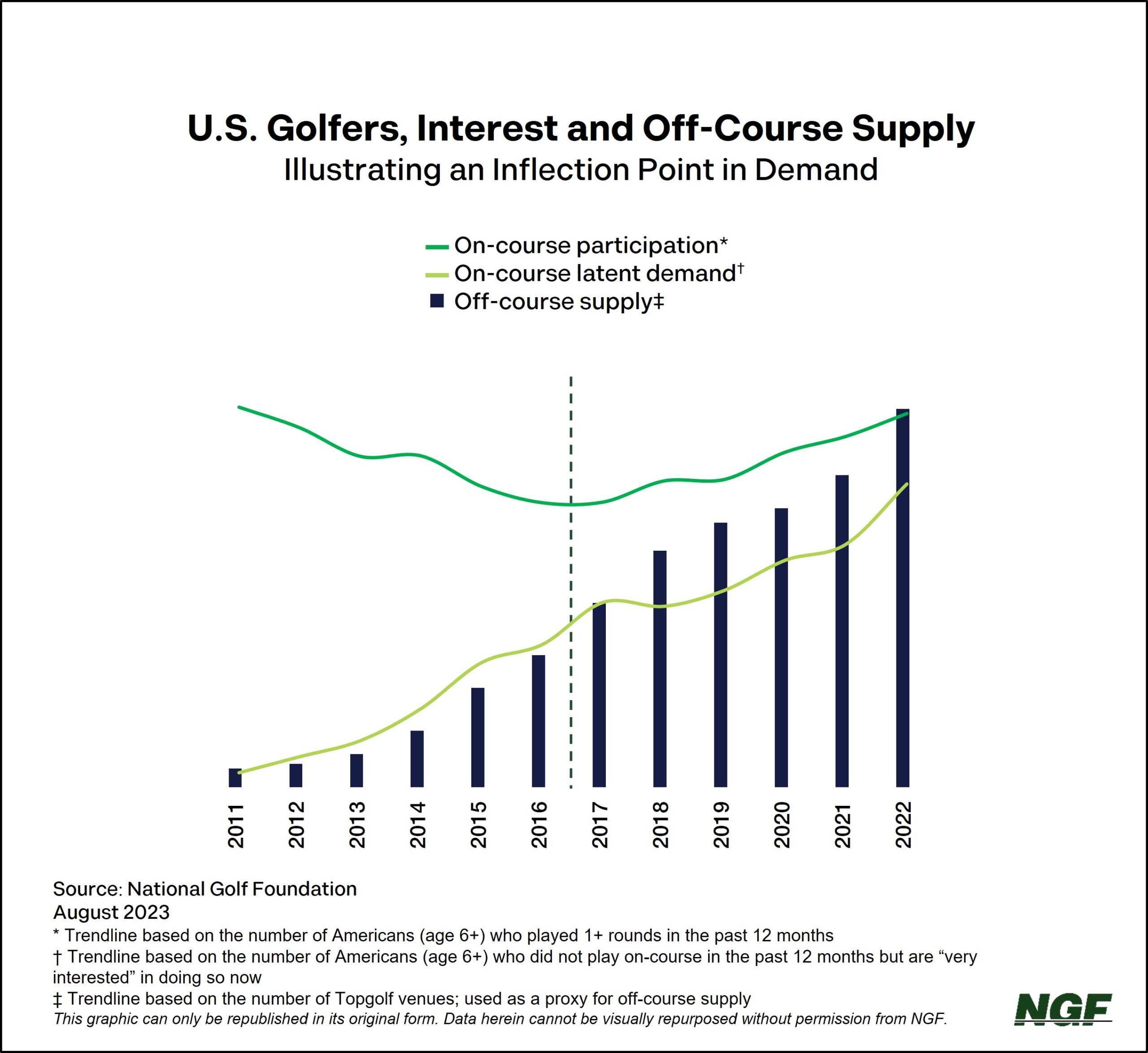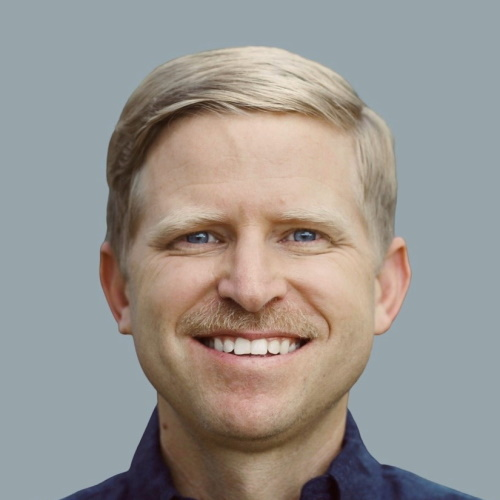The Largest-Growing Sport in America
(
If you haven’t played pickleball yet, you’ve at least heard of it. Perhaps even heard it – that steady stream of 50-decibel “pops.” Pickleball’s been dubbed the loudest … er, fastest-growing … sport in America.
On a percentage basis, it is indeed on a rapid growth path (+18% CAGR since 2014), but a look volumetrically across the American sports landscape reveals a different kind of juggernaut.
The title of “largest-growing sport in America” belongs to golf. That’s if we use the more contemporary and comprehensive definition of golf, which comprises various forms of “grassless” participation where people swing clubs and hit balls at real and/or virtual targets. Using this definition, golf’s growth over the past eight years has topped pickleball by a whopping 4.5 million people. Half the states in this country have smaller populations.
Golf’s trajectory is impressive in its own right, but the story is usually modulated for fear of sounding opportunistic (“moving the goalposts”), and because the relationship between on- and off-course has been sort of dubious up to this point.
- Is off-course growing the proverbial pie?
- Creating market cannibalization?
- How many golfers has it produced?
That last question is the one we’re asked most often. And while it seems straightforward, answering it is not.
Why? For one, there are analytical challenges sorting through the ebbs and flows of golf’s participant pool. How do you classify a person who tried Topgolf in 2019, tried “green grass” for the first time in 2021, but hasn’t played, in any form, over the past 18 months? Are they still a “created golfer?”
There’s also the philosophical question – from both business and cultural perspectives – of what it even means to be a golfer. Do you have to play a certain amount? Spend a certain amount? Just identify as one? Heck, a third of active green grass players don’t do that.
Here’s what we can tell you about golfer creation:
- An estimated 2.5 million (10%) of today’s 25.6 million on-course players credit their off-course experience(s) for getting them to the golf course
- Approximately half of on-course participants agree that off-course “reengaged them” with golf
- Interest in taking up the traditional game is five times higher among “non-golfers” with off-course experience, than those without
- Around two-thirds of today’s on-course beginners are coming to the course with off-course experience, compared to fewer than 40% five years ago
Sometimes the grass is green on both sides.

Our team’s extensive research on this subject has led us to a couple of conclusions:
First, it’s conceivable that neither the pre-pandemic stability nor post-pandemic growth we’ve enjoyed in green grass participation happen without the catalytic effects of the “grassless” game. In fact, we’d note that on-course demand finally hit an inflection point as off-course supply reached a “critical mass” across major markets.
Second, this is not the zero-sum game that many feared it’d be, where golf-related time, attention and money are simply reallocated from one side to the other. If anything, it seems the total pie is getting bigger and that golf, on the whole, is siphoning those scarce resources away from other leisure pursuits.
In a recent search, Google’s news aggregator fetched 300 articles that include “fastest-growing sport in America” – all describing pickleball – but virtually nothing about a “largest-growing sport in America.”
That’s our story to tell. So let’s tell it.
Short Game.
"*" indicates required fields
How can we help?
NGF Membership Concierge

"Moe"
Learn From NGF Members
 Ship Sticks Secrets to a Hassle-Free Buddies Golf Trip
Ship Sticks Secrets to a Hassle-Free Buddies Golf Trip
Whether you’re the head planner of your upcoming buddies golf trip or simply along for the ride, we’ve gathered a few easy ways to keep everyone in your group happy.
Read More... Golf Course Turf, Soil and Water Quality Diagnostic Testing
Golf Course Turf, Soil and Water Quality Diagnostic Testing
As humans, we see our primary care physician on a regular basis to proactively evaluate our vital signs. Likewise, a superintendent should perform frequent diagnostic testing on their golf course.
Read More... Unlocking Distance: Launch Conditions and Angle of Attack
Unlocking Distance: Launch Conditions and Angle of Attack
We’ve long known that higher launch and lower spin is a powerful combination for generating consistently long and straight tee shots. A key factor in optimizing launch conditions, one often overlooked, is ...
Read More...





